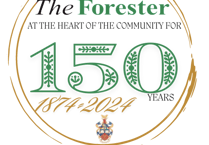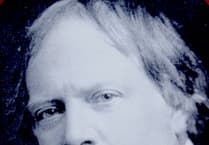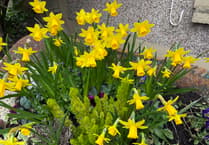Forest place names have their own mystery, with their meends, tumps, and deans, and my first Forest home was in a village named after a 9th century religious person, pronounced in an idiosyncratic way.
The pronunciation of St Briavels always provides a challenge to outsiders, and did for me when I was an outsider over 50 years ago.
Don’t pronounce St Briavels letter by letter, because its vowels are notoriously misleading.
‘Briavels’ rhymes with ‘revels’ not ‘friar wells’. The village is believed to be named after a 9th Century Celtic hermit or missionary named Brioc or Brieuc, although for a time in the middle ages it was known as Ledenia Parva or ‘Little Lydney’ before reverting to the often mispronounced name by which it is now known.
St Briavels is one of the few Welsh names surviving in this part of England. West Herefordshire is packed with places with Welsh names, including the wonderfully unpronounceable village name Bagwyllydiart, but in the Forest part of the Welsh border the place names are almost all of English origin.
Lancaut is one of the few remaining Celtic examples of pre-Saxon times and Welshbury Hill is a recognition of the pre-Roman Celts who held out unsuccessfully against the Romans two millennia ago.
The Celtic legacy continues with the word tump, a title attached to various hills scattered around the Forest, at Dymock, Awre and Stowe Green.
The Forest has an interesting range of placenames which describe the area, its industries and geographical features.
The industrial history is commemorated in Coalway, Coleford, Cinderford, Nailbridge and Steam Mills.
There are watery names, rivers, brooks, water crossings and wells: Bigsweir, Drybrook, Redbrook, Coleford and Cinderford (again), Clearwell and Broadwell. There is also Brockweir, which I always thought was related to badgers by the Wye, perhaps sheep badgers, who may have run their sheep by the river, or perhaps real badgers. However in this case brock means brook, another watery epithet.
Newent, Newland, Newnham and Newerne would have been new when they acquired their names.
There are ‘Eys’ and ‘Leys’: the eys are islands. Lydney must have been almost an island when the River Severn flowed freely around the Town Hall area in Saxon times, and a long forgotten local man named something like ‘Lida’ had some connection with the area, hence ‘Lida(n)ey’. Blakeney was the black island. The leys are meadows or reclaimed forest lands, as in Soudley and Flaxley.
There are names celebrating the Dean, as in Ruardean, Mitcheldean, Littledean.
And there is the distinctive Forest descriptor ‘Meend’ which probably described uncultivated forest areas, as in St Briavels Meend, Cliffords Mesne, Bream’s Meend and Kells Meend in Berry Hill.
Hopes are valleys (Longhope and Cannop), and there was a Saxon called something like Hiwoldes who may have owned some land in Hewelsfield.
Minsterworth had a mediaeval connection with Gloucester Cathedral (or Gloucester Abbey as it then was).
There were crofts at Whitecroft, Woodcroft, Oldcroft, and glassmaking refugees from Europe immigrants from Europe at Glasshouse Hill.
And there were puddles in the Pludds.





Comments
This article has no comments yet. Be the first to leave a comment.